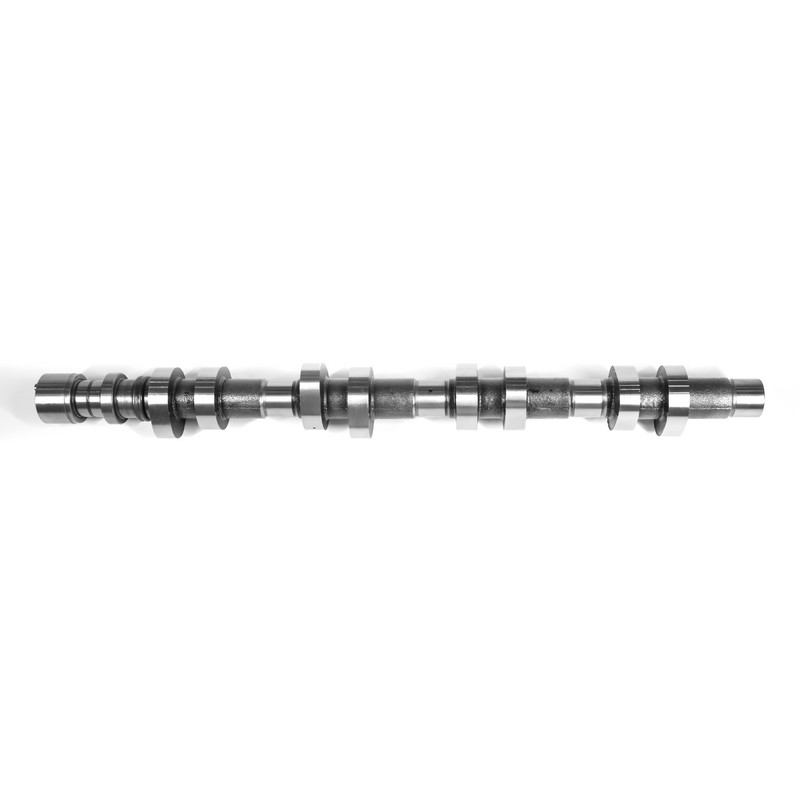Common fault analysis of Chrysler engine camshaft and methods to extend service life
1. Common fault analysis of Chrysler engine camshaft
Wear and fatigue
Cause: The camshaft has long-term high-frequency contact with the tappet and the valve rocker arm, and the metal surface gradually wears, resulting in insufficient valve lift or abnormal noise.
Performance: Engine power decreases, idle jitter, and abnormal increase in valve clearance.
Abnormal noise and noise
Cause: Camshaft bearing wear, insufficient lubrication or cam profile damage, resulting in metal friction sound.
Performance: The "click" sound is obvious during cold start, and the noise increases during acceleration.
Timing system failure
Cause: Failure of the timing chain/belt tensioner, chain elongation or tooth skipping, resulting in disordered valve timing.
Performance: The engine fault light is on, severe jitter, and power interruption.
Poor lubrication
Cause: Poor oil quality, oil channel blockage or oil pump failure, resulting in lack of oil in the camshaft bearing.
Performance: Bearing ablation, camshaft locking.
Manufacturing defects
Reason: Some Chrysler models (such as the early 3.6L V6 engine) have camshaft design or material defects.
Performance: Early wear and abnormal breakage.
Regular maintenance and care
Replace high-quality engine oil: Choose fully synthetic engine oil (such as API SN or higher standards) and replace it every 5000-7500 kilometers.
Check the oil level: Ensure that the engine oil is sufficient to avoid insufficient lubrication.
Regularly replace the oil filter: Prevent impurities from entering the oil channel.
Pay attention to the status of the timing system
Replace the timing belt/chain: Replace it according to the manual's recommended cycle (usually 60,000-100,000 kilometers) to avoid elongation or aging.
Check the tensioner and guide rail: Ensure that the tensioner has no leakage and the guide rail has no wear.
Avoid extreme working conditions
Cold start protection: Avoid high speed driving when the car is cold, and drive normally after the water temperature rises.
Reduce high-load operation: Avoid long-term towing or overloading to reduce the camshaft load.
Use original or high-quality accessories
When replacing the camshaft: choose original parts or well-known brands (such as Melling, Cloyes) to avoid inferior products.
Upgraded and improved parts: For models with known defects, you can install the reinforced camshaft or improved tensioner provided by the manufacturer.
Regular inspection and diagnosis
Auscultation of abnormal noise: Use a stethoscope to check the camshaft area and find abnormalities in time.
Check the valve clearance: Adjust it every 20,000-30,000 kilometers to ensure normal valve lift.
OBD-II diagnosis: Check the timing system or camshaft position sensor problems through fault codes.
Optimize driving habits
Smooth driving: Avoid sudden acceleration and braking to reduce camshaft impact.
Regular short-distance driving: If you drive short distances for a long time, it is recommended to drive long distances at least once a week to improve lubrication.

Timely maintenance: When abnormal noise or power reduction is found, check the camshaft and timing system immediately.
Avoid modification risks: Non-professional modifications may destroy the original balance and accelerate wear.
Reference Technical Bulletins: Follow Chrysler's official Technical Bulletins (TSBs) for suggested improvements for specific models.